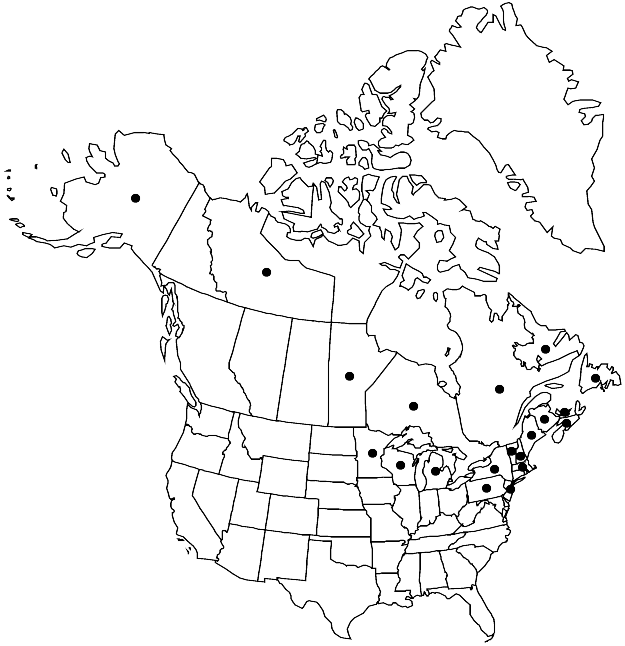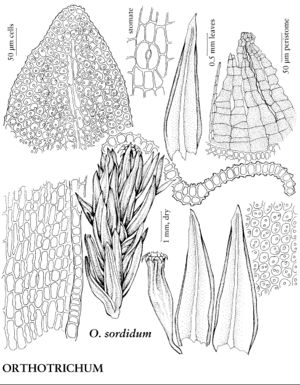Orthotrichum sordidum
in C. F. Austin, Musci Appalach., 168. 1870.
Plants 0.5–3 cm. Stem leaves loosely erect-appressed and often slightly contorted when dry, narrowly lanceolate to oblong-lanceolate, 2–3.6 mm; margins revolute to near apex, entire; apex acute; basal laminal cells elongate-rectangular, walls thick, nodose; distal cells 7–14 µm, 1-stratose, papillae 2 or 3 per cell, conic, size moderate. Specialized asexual reproduction absent. Sexual condition gonioautoicous. Seta 0.5–1.6 mm. Capsule 1/2–2/3 emergent, sometimes immersed or fully exserted, oblong to oblong-cylindric, 0.8–1.5 mm, strongly 8-ribbed 1/2–2/3 length; stomata superficial; peristome double; prostome rudimentary or absent; exostome teeth 8, reflexed, reticulately papillose to obscurely papillose, deeply perforate, cancellate; endostome segments 8, well developed, usually present when capsule is old and dry, narrow, of 1 or 2 rows of cells, smooth or finely verrucose. Calyptra oblong-conic, smooth, sparsely hairy, hairs smooth or papillose. Spores 19–29 µm.
Habitat: Trunks of deciduous and coniferous trees, boulders in hardwood forests, small trees
Elevation: low to moderate elevations (0-1000 m)
Distribution

Man., N.B., Nfld. and Labr., N.W.T., N.S., Ont., P.E.I., Que., Alaska, Maine, Mass., Mich., Minn., N.H., N.J., N.Y., Pa., Vt., Wis., n Asia.
Discussion
Orthotrichum sordidum is distinguished by its oblong capsules with exostome teeth perforate almost to the base and cancellate distally. The capsule neck is long and shriveled.
Selected References
None.
